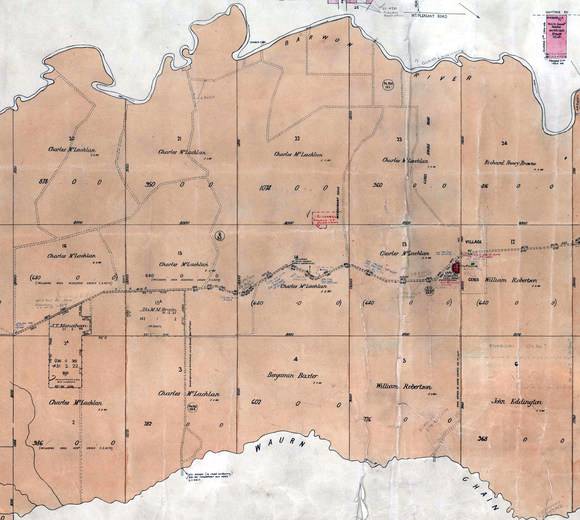| Back to search results » | Back to search page » |
|
Ceres Recreation Reserve (incl. Memorial Gates & Trees)
Statement of Significance
What is Significant? How is it significant? Why is it significant? The perimeter Cypress trees at the Ceres Recreation Reserve are aesthetically significant as an important perimeter boarder to the setting of the reserve, and together with the memorial gates, contribute to the visual qualities of the place, a legacy of the beautification of the site in 1916, 1920s and 1937 (Criterion E). The setting of the Ceres Recreation Reserve, including the grassed sports oval, perimeter Cypress Trees and design of the memorial gates, is directly comparable to the Lara Reserve, memorial trees and gates, albeit on a smaller, more rural scale. It is a contextually rare surviving rural reserve in Greater Geelong that has maintained the setting intended in the early 20th century. The Ceres Recreation Reserve is socially significant as it is recognised and valued by the local community as a place for organized and informal sport and recreation (Criterion G). The site has been the location of cricket and football from 1912. The memorial gates have social significance for their commemorative associations with the pioneers of Ceres and the local soldiers who served and died n the Great War (Criterion G). Some of the surviving Cypress trees may also have commemorative value as plantings in honour of local soldiers of the First World War.
The Ceres Recreation Reserve, 20 Cochranes Road, Ceres has significance as the location of the local cricket and football clubs and matches, and other recreational activities since the early 1900s, and particularly from 1912. It was at this time when the site was acquired by public subscription from William Leigh and developed as an important recreational centre for the Barrabool Hills area. The beautification of the reserve in the early years included the planting of trees. In 1916, Arbor Day was celebrated by the neighbouring Ceres State School, with trees planting to commemorate Earl Kitchener and equally importantly, to honour and commemorate local soldiers serving and killed in action in the First World War. Rows of cypress trees were planted by the local State School children in 1922 and 1924. Several of these trees, although senescent, form the perimeter of the reserve today. The local pioneers of the area and the soldiers who served in the Great War were honoured with the construction of a memorial gateway at the north-east entrance of the reserve in 1937. The fabric of significance at the reserve includes: grassed sports oval, perimeter mature cypress trees and the memorial gates (with dressed bluestone piers, original cast iron palisade bays and reconstructed cast iron gates).
The Ceres Recreation Reserve (including the war memorial gates and mature perimeter cypress trees), 20 Cochranes Road, Ceres is historically, aesthetically and socially significant at a LOCAL level.
The Ceres Recreation Reserve, 20 Cochranes Road, has historical significance for its associations with the evolution and progress of cricket, football and other recreational activities by the Ceres and Barrabool Hills communities from the early 1900s and particularly from 1912 (Criterion A). With a cricket pitch first laid out in the early 1900s in William Leigh's paddock (an avid cricketer), it was in 1912 when a portion of his land was acquired by public subscription as the first permanent recreation reserve in Ceres. A Trust was formed to manage and develop the reserve and by 1929 it had raised £1000 for the erection of pavilions, improving the ground and beautifying the reserve. From 1916, trees were planted on Arbor Day by students of the neighbouring Ceres State School. Forming the perimeter boundary, these trees contributed to the beautification of the reserve as well as honour and commemorate local soldiers of the Great War. Other rows of Cypress trees were planted by the school children in 1922 and 1924. The Ceres Recreation Reserve therefore has associations with the local community's involvement in the First World War. Another physical legacy of these associations is the memorial gates at the north-east entrance, erected in 1937. They also have honour the pioneers of the district. The Ceres Recreation Reserve has further associations with several local figures who contributed much to the progress of the reserve, including those who served as Trustees or on the Committee of Management following the transfer of the grounds in 1931.
Group
Recreation and Entertainment
Category
Reserve


















![Figure 9: Barrabool Recreation Reserve looking south to the pavilion following alterations, n.d. [c.2014].
Source: Crown Reserve file Rs 4144 DELWP.](http://vhd.heritage.vic.gov.au/images/vhr/208774.jpg)


